10 dishes whose true origin you probably didn't know
Categories: Food and Drinks | Travel | World
By Pictolic https://pictolic.com/article/10-dishes-whose-true-origin-you-probably-didnt-know.htmlThe sights of different countries are not only works of art, famous paintings, architectural objects, but also dishes. Croissants, for example, are a real symbol of a French breakfast in a Parisian coffee shop against the backdrop of the Eiffel Tower, and the words "pasta" or "gelato" bring Italy to mind.
But what if we say that these dishes actually originated in completely different countries, what do you think? The British company CDA in its blog revealed the secrets of the origin of some products that can surprise you!
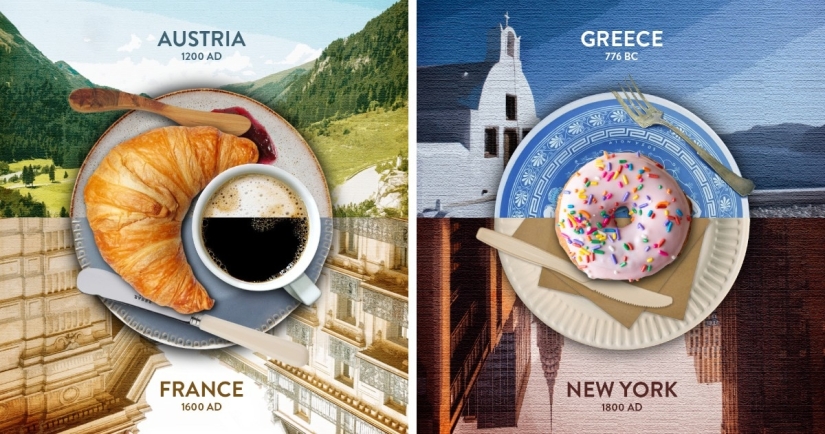
Where, in our opinion, croissants come from: France. Where the croissants actually come from: Austria.
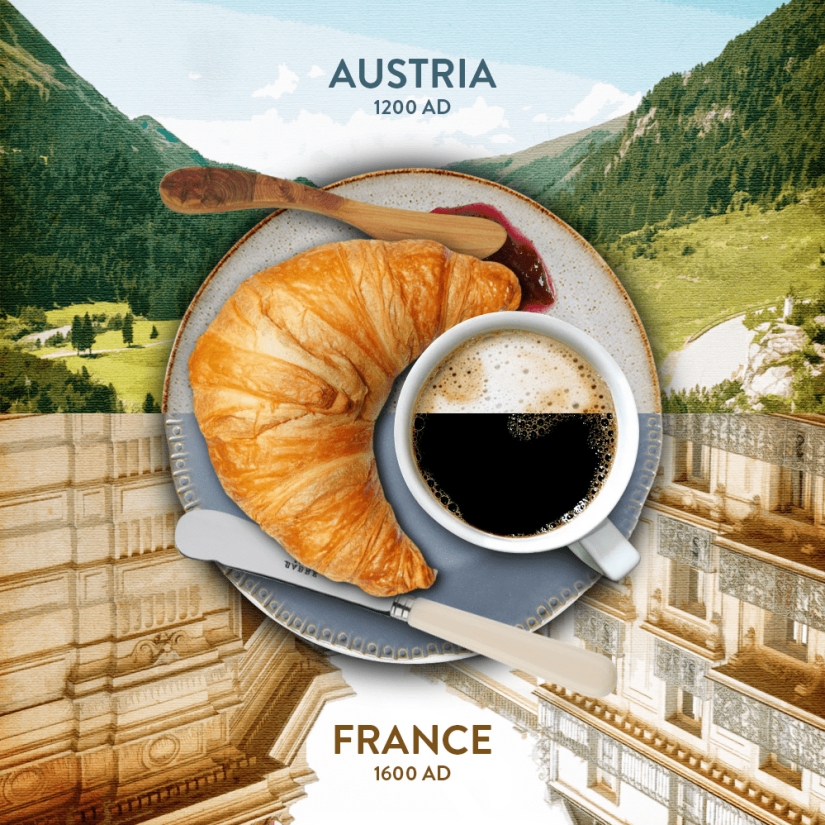
Whether you eat croissants salty or sweet, the delicious puff pastry-based treat that is so deeply ingrained in French culture was created in Vienna, Austria. The spiritual ancestor of the croissant can be considered a bagel. Many historians believe that the crescent-shaped treat dates back to the monastery bakeries, and it was baked as part of the rituals in honor of Easter, and this pastry was first mentioned in the 12th century.
Where we think fish and French fries come from: Great Britain. Where the fish and French fries actually come from: Portugal.
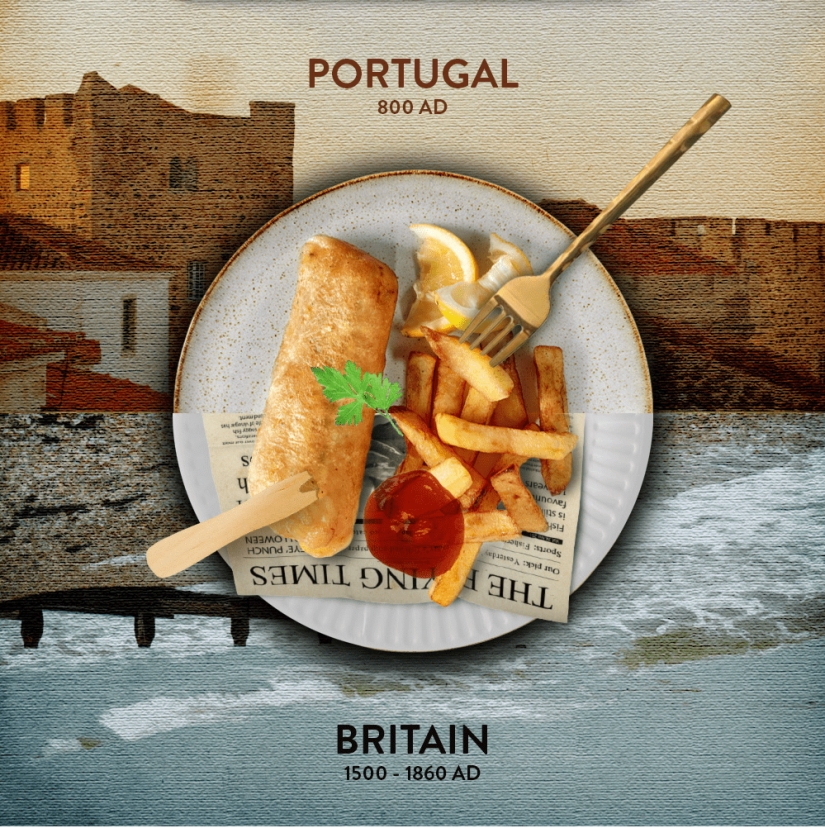
If there's one thing the British coast is famous for, it's fish and chips. It will be difficult for you to find a seaside town that does not have at least one place where you can try them. Fish and chips became so popular in the UK that during the Second World War, Winston Churchill exempted this dish from rationing. Surprisingly, this dish is actually not British, but Portuguese
Sephardic Jews from Portugal are said to have brought an ancient Andalusian dish called "pescado frito" to Britain in the 1400s while fleeing religious persecution. The white fish was fried in a thin layer of flour, ready for Shabbat. And when the potato became popular in the 1800s, it perfectly complemented the dish.
Where, in our opinion, ice cream comes from: Italy. Where ice cream actually comes from: Mongolia
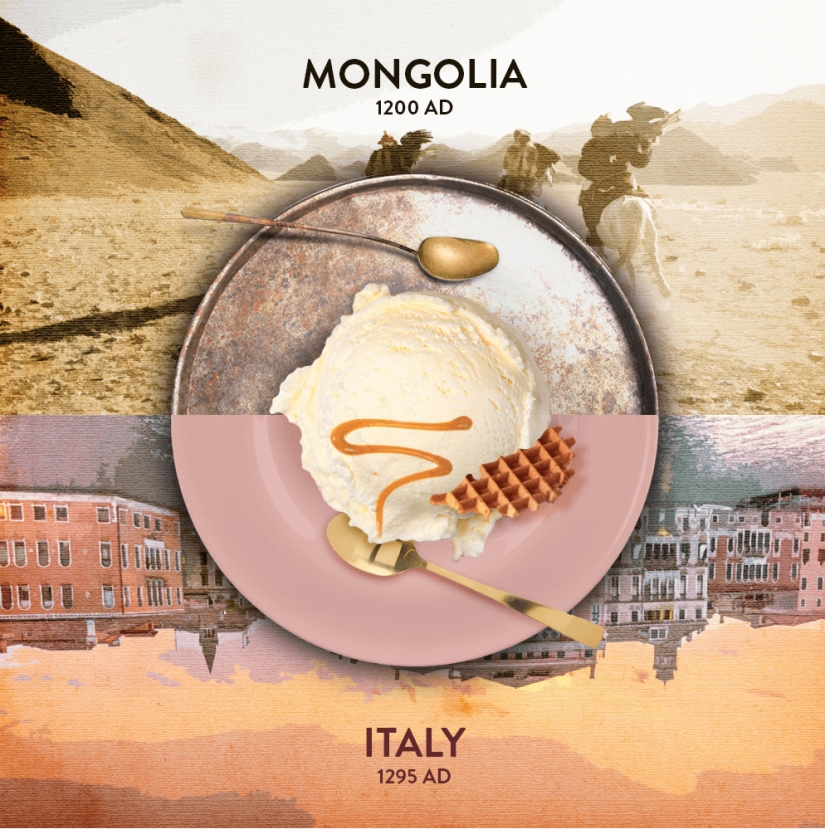
Italians are famous all over the world for the quality of their ice cream and gelato, so it is forgivable to think that they invented this sweet treat, but this is a mistake. In fact, this is an achievement of Mongolia (at least, so the story goes).
It wasn't exactly the ice cream we know and love today, and it all happened completely by accident. Mongol horsemen are said to have carried buffalo or yak milk across the Gobi Desert. They jumped, the temperature dropped, and the churned milk froze. As the Mongol Empire expanded in the 1200s, so did the popularity of this frozen milk/cream. It is said that Marco Polo brought this idea to Italy at the end of the 13th century.
Where we think pasta comes from: Italy. Where the pasta actually comes from: China.
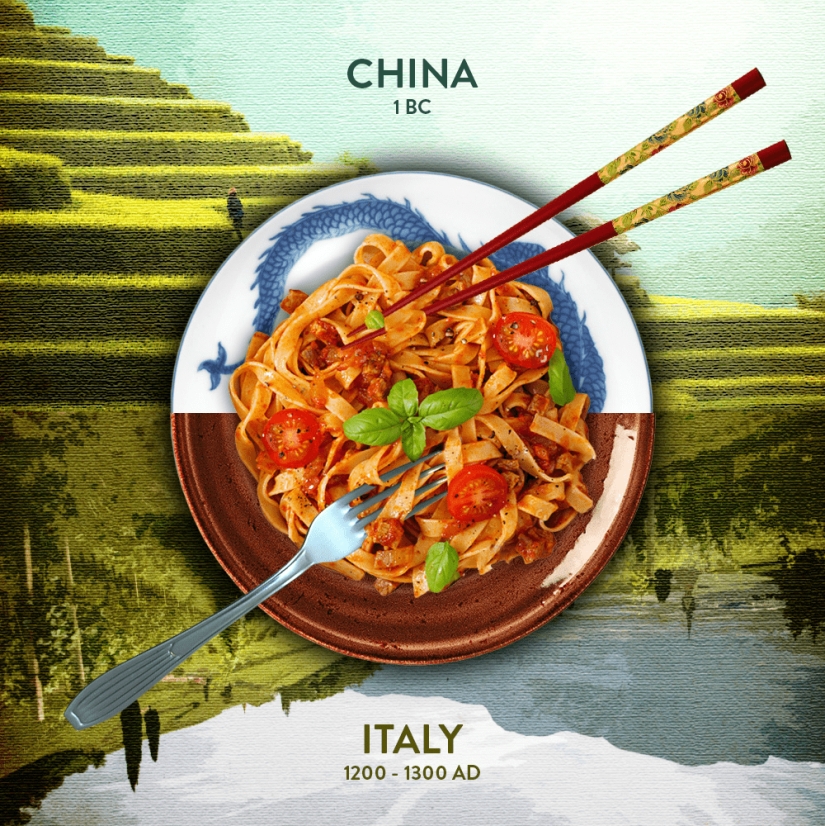
Sorry, Italy, but this dish also came from another country. The noodles are said to have gained popularity in Italy around the 13th century and were most likely brought by European travelers. They probably discovered egg noodles thanks to the nomadic Arabs who brought the first pasta to the west from Asia.
What distinguishes Italian pasta from other types of noodles is the use of durum wheat. Egg noodles have long been a staple of the Chinese diet, dating back to the first century BC.
But improvements in the manufacturing process and the addition of durum wheat have made the pasta affordable and versatile, providing it with a long shelf life in dried form, as well as excellent taste in combination with local Mediterranean products, which has firmly rooted it as part of Italian culture.
Where, in our opinion, donuts come from: USA (New York). Where the doughnuts actually come from: Greece
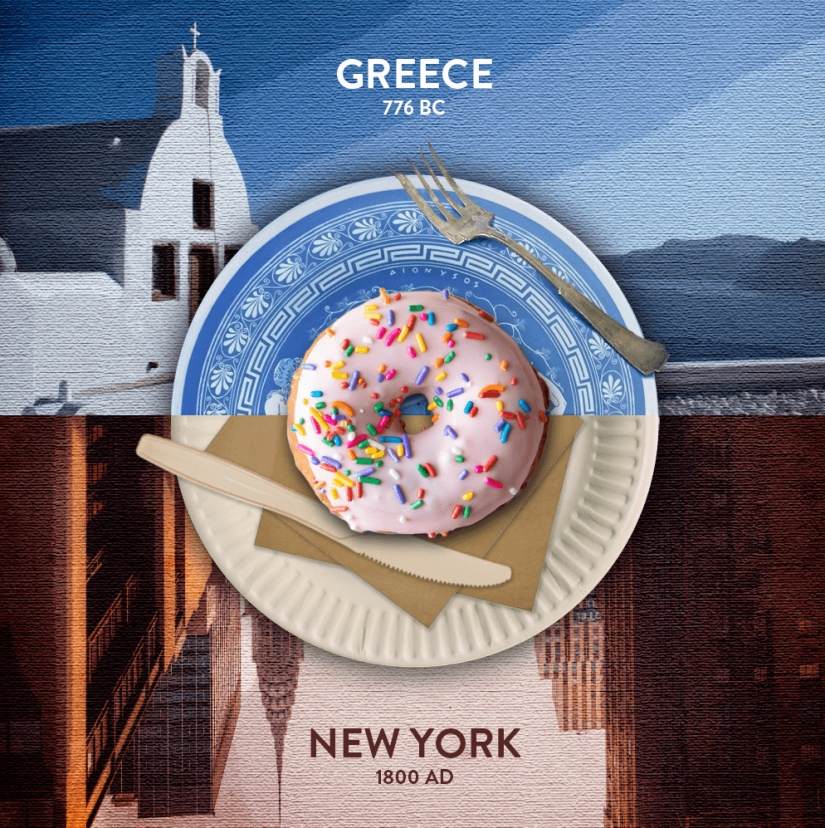
Dunkin ' Donuts and Krispy Kreme are just a couple of major American brands that have made a global name for themselves solely through the sale of this dessert. But donuts are not a native American product, as you might think. Previously, they did not have a characteristic ring shape. The earliest version of the doughnut in its familiar form dates back to the time when Dutch settlers brought them from Europe to New York (or New Amsterdam, as it was then called).
But the birthplace of the doughnut is in Greece. Lukumades, as they are called, are essentially small balls covered with honey and walnuts. They are also considered the oldest recorded dessert. They were awarded to the winners of the Olympic Games as "honey tokens", starting with the very first in 776 BC.
Where do we think vindaloo comes from?: India. Where Vindaloo actually comes from: Portugal.
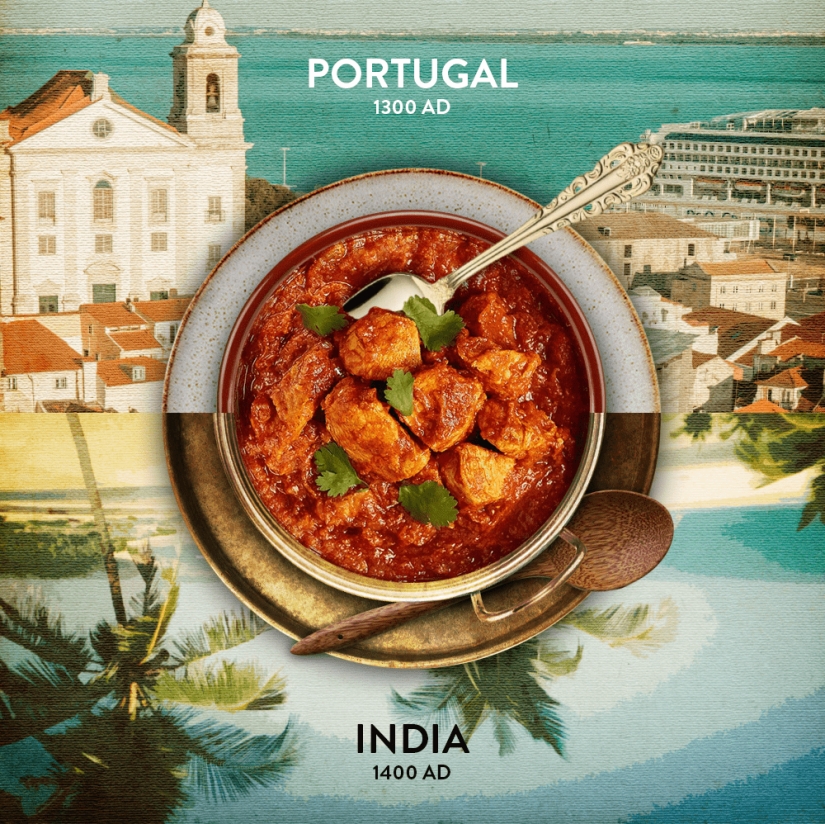
It seems that when it comes to local food, Portugal is not getting the proper recognition. Although many dishes have been imported from India and adapted to other cuisines, vindaloo is not one of them. It is believed that its very name is actually a distorted pronunciation of the Portuguese dish Carne de Vinha D'alhos-a dish of meat marinated in wine vinegar and garlic.
This meat dish was introduced to the Goa region of India by Portuguese settlers in the 15th century, and in Portugal it was eaten many centuries earlier. Since wine vinegar was not used in India, locally produced ingredients such as tamarind, black pepper, and cardamom were used instead. Perhaps the addition of chili pepper is something the Portuguese Empire inherited from South America.
Where, it seems to us, the egg in Scottish origin: Great Britain (Scotland). Where does the Scottish egg actually come from: India.
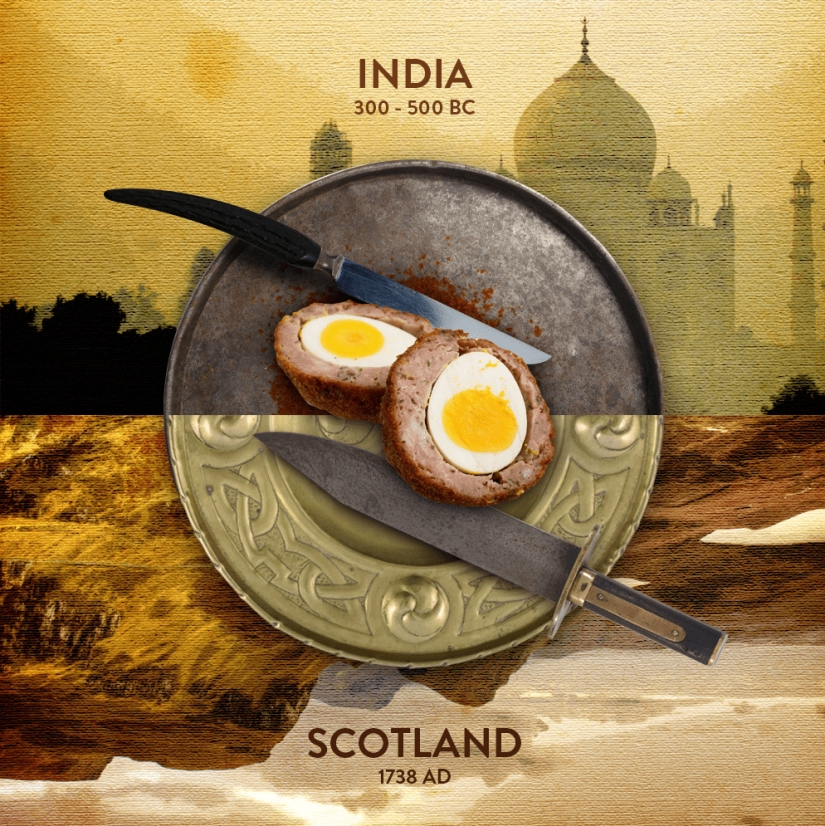
It's not clear how this dish got under the Scottish flag, but it has a secret: it's not Scottish at all. It is believed that the eggs that many people like to eat at picnics are inspired by the Indian dish nargisi kofta, which was mentioned in India as early as 500 BC. Nargisi kofta consists of a hard-boiled egg, smeared with seasoned minced meat, and all this is then fried. It is likely that the British encountered nargisi kofta while traveling in India.
London department store Fortnum & Mason claims to be the creator of the Scotch egg as we know it today, advertising it as a snack for travelers in the early 18th century. They may not have invented this dish, but they certainly popularized it.
Where we think Swedish meatballs came from: Sweden. Where do Swedish meatballs really come from: Turkey.
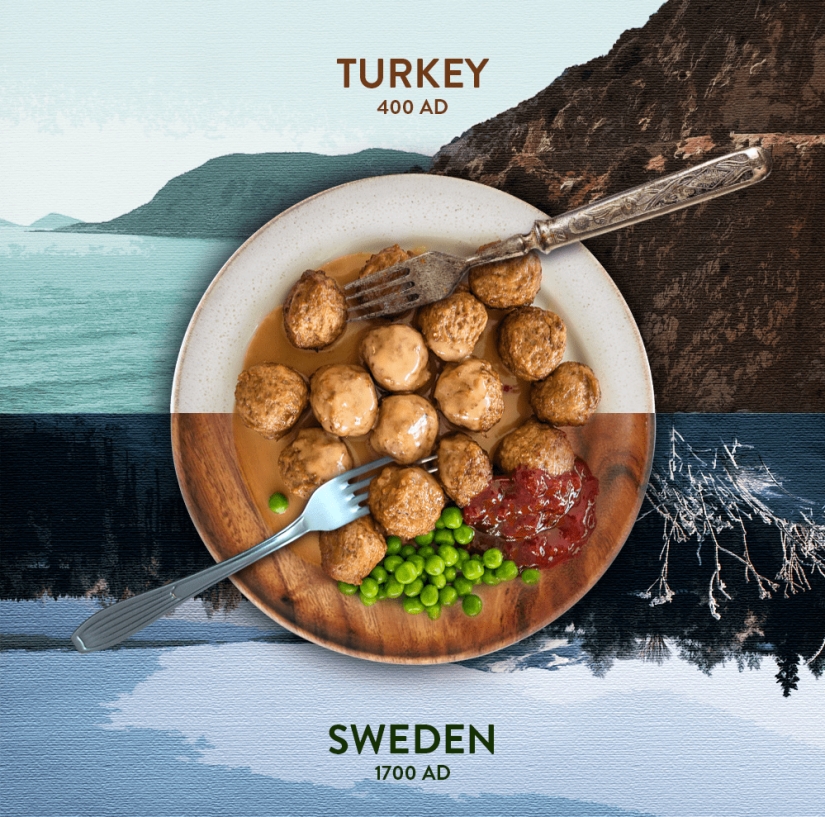
What's a trip to IKEA without Swedish meatballs? The name of this dish seems to be Scandinavian, but in fact it came from Turkey (at least its recipe). The idea of rolling meat into balls to make it easier to eat is not unique (China has been doing this for centuries), but the Swedes loved it the most, just as they did it in Turkey.
It is said that the Turkish recipe was brought to Scandinavia in the 18th century by King Charles XII. Turkish meatballs, known as "kufta", are made from beef and lamb with onion, egg, parsley, breadcrumbs and salt. These days, Swedish meatballs are usually made from pork.
Where we think churros is from: Spain. Where churros actually comes from: China.
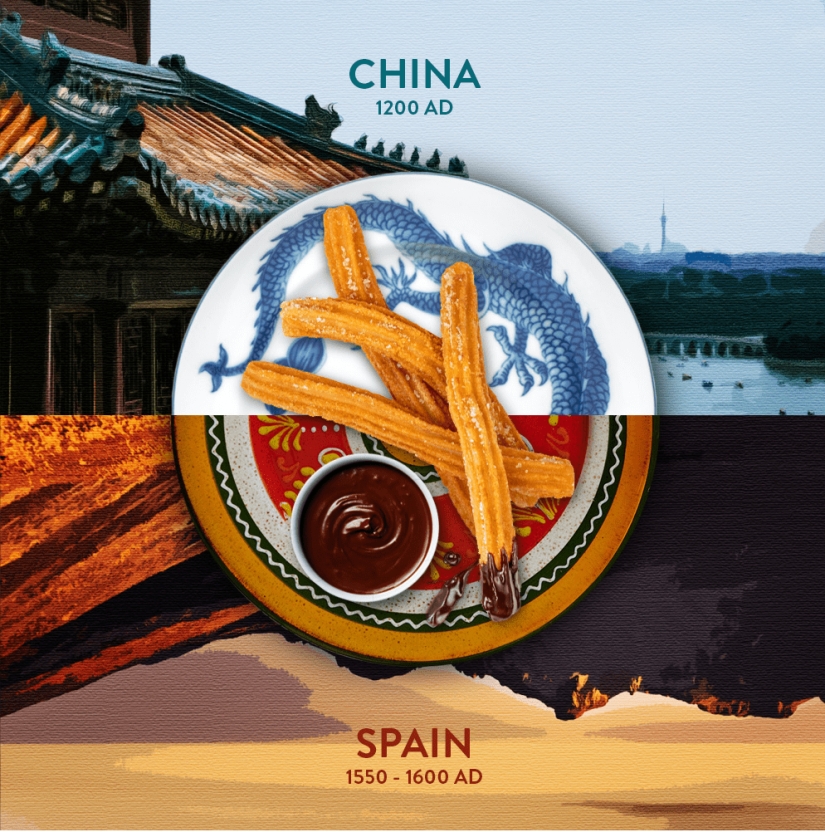
Dessert churros is an integral part of Spanish street cuisine, but it is not a Spanish dish.
This is a variation of one of Yutyao's favorite Chinese breakfast dishes, which is actually a little salty rather than sweet. Deep-fried strips of dough were brought to Spain via Portugal in the 17th century. A star-shaped nozzle was used to form the dough, and the dish turned into the famous sweet delicacy churros.
Where we think tikka masala comes from: Bangladesh. Where does tikka masala really come from: United Kingdom (Glasgow)
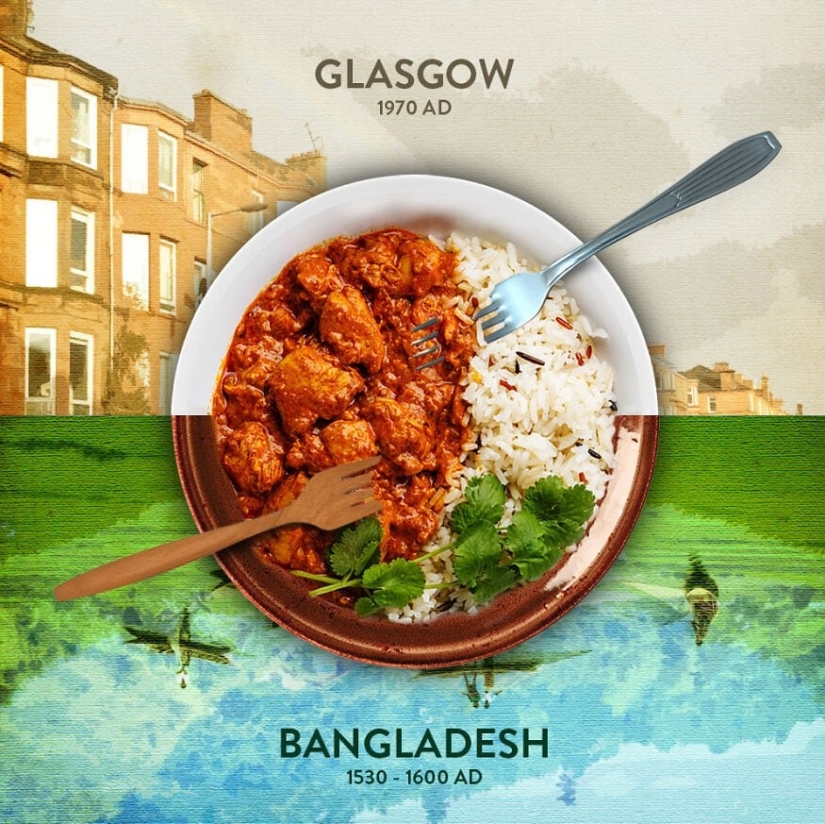
Chicken tikka ("tikka "means" slice") definitely originated in the Indian subcontinent during the Mungal Empire and became popular around the 1600s, which is well documented.
But tikka masala is a different story. If tikka is usually a dry dish of marinated meat with spices, which is cooked on coals, then tikka masala is a juicy, rich and creamy dish. In the 1970s, an Indian chef worked in Glasgow, and it was there that he developed a dish that Westerners came to consider an Indian-Bangladeshi treat.
Here is a moment of history for gourmets. Surely your mouth is already watering!
Keywords: Travel | World | Countries | Dishes | Food and drinks | Proof | Symbols
Post News ArticleRecent articles

It is generally accepted that the Chinese are not very tall people. This is basically true - the average height of men in the ...

When we hear about Judaism and Jews, among many associations, the rejection of pork certainly pops up in our memory. This is not ...
Related articles

Our world is an amazing place, full of interesting people, places, animals, things and much more. It never ceases to amaze! --> In ...

What to do if you find a mysterious object, the purpose of which is impossible to guess on the fly? The easiest way is to show it ...

Karas Jonut is a Romanian photographer who creates masterpieces in the field of digital art and photography. His works are ...

Our world is an amazing place, full of interesting people, places, animals, things and much more. It never ceases to amaze! --> In ...